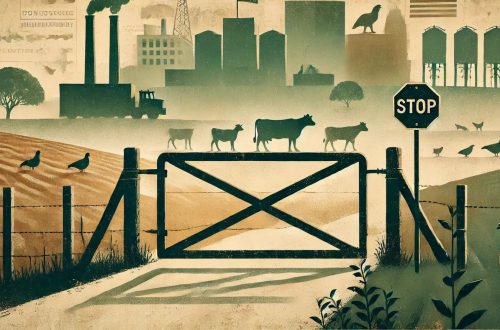India’s Troubling Ecological Connection: Animal Agriculture and Environmental Degradation
India, with its rich cultural diversity and complex agri-food systems, faces unique challenges and opportunities in its relationship with animal agriculture. As one of the largest milk-producing nations and home to the world’s largest population of cattle, the effects of India’s animal agriculture are both profound and multi-dimensional.
In India, the land resources used for animal agriculture are significant. As per the Indian Council of Agricultural Research (ICAR), about 45-50% of India’s total geographical area is used for livestock farming, including grazing lands and lands used for the cultivation of feed crops. As livestock numbers continue to grow to meet the increasing demand for dairy and meat products, there has been a substantial reduction in forest cover and biodiversity. With the country hosting four of the world’s 36 biodiversity hotspots, this rampant deforestation poses a major threat to the nation’s rich biodiversity.
The water usage associated with animal agriculture in India also intensifies the country’s ongoing water crisis. The Water Footprint Network states that India ranks high in water footprint due to livestock rearing, which includes the water used for drinking, crop irrigation, and cleaning of animal rearing facilities. Moreover, pollution caused by the disposal of animal waste into water bodies presents a significant challenge, leading to the contamination of both groundwater and surface water, thus threatening human health and aquatic ecosystems.
Additionally, animal agriculture’s contribution to India’s greenhouse gas emissions is substantial. According to a study published in Environmental Research Letters, India’s livestock sector is responsible for about 7.8% of the country’s total greenhouse gas emissions. A major portion of these emissions is methane, a potent greenhouse gas released during the digestive processes of ruminant livestock such as cattle and buffalo.
The livestock sector in India also presents several public health challenges. Overcrowded conditions, unsanitary practices, and overuse of antibiotics in livestock farming have been linked to increased disease transmission and the development of antibiotic-resistant bacteria. The Indian Journal of Animal Sciences has reported multiple instances of antibiotic residues in Indian dairy products, highlighting the issue of antibiotic resistance in the country.
To mitigate these pressing issues, a paradigm shift towards sustainable agriculture is needed. The Indian government’s schemes like the Rashtriya Krishi Vikas Yojana and Paramparagat Krishi Vikas Yojana aim to encourage organic farming and sustainable practices. However, more emphasis needs to be placed on promoting plant-based diets and agroecological practices. Small-scale farmers who traditionally practice sustainable agriculture, should be given greater support and recognition.
To truly address the environmental impact of animal agriculture, India needs a holistic and comprehensive approach that takes into account environmental conservation, public health, animal sentience, and the livelihoods of millions of farmers. It is imperative that India, with its influential role in global agriculture, confronts the implications of animal agriculture and leads the way towards sustainable and responsible food production systems. By doing so, we can secure the well-being of our environment and future generations.



